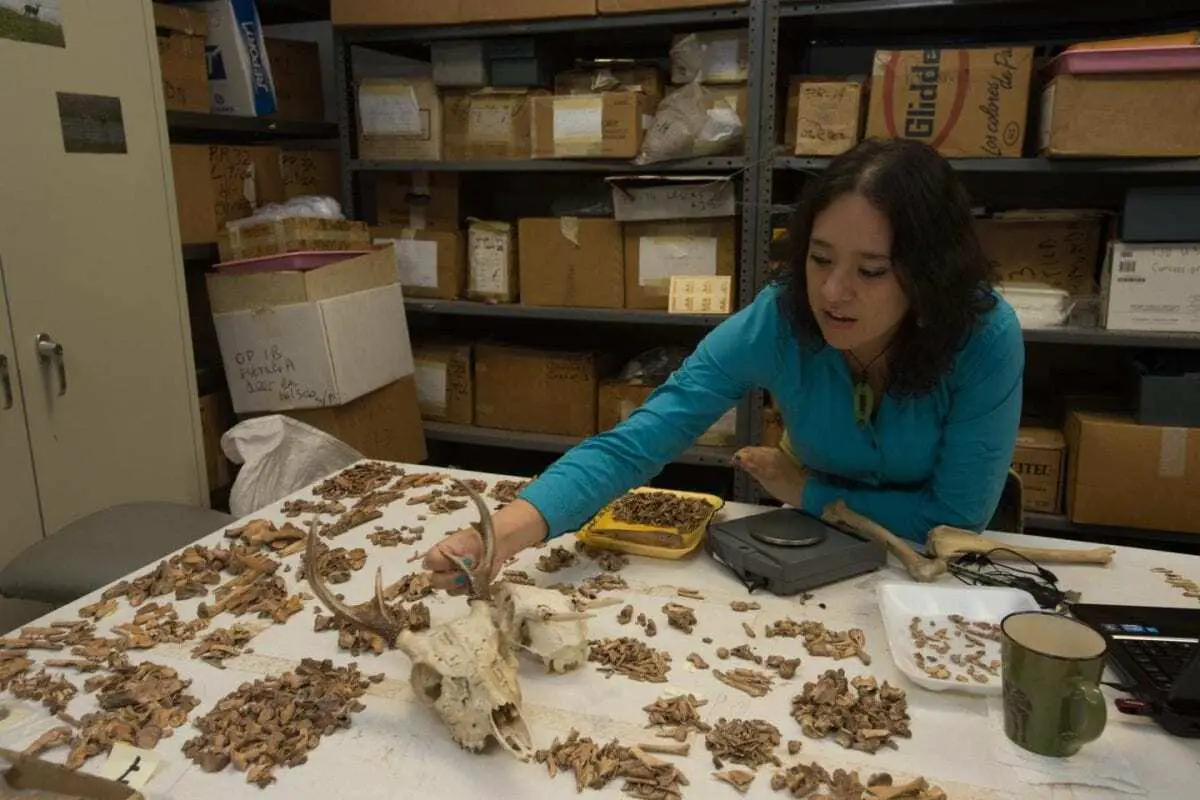In pre-Columbian times, the white-tailed deer was among the most abundant and frequently consumed mammals in Panama.
It was also an icon, represented on thousands of clay vessels. Through an analysis of deer remains in refuse piles at the Sitio Sierra archaeological site, researchers from the Smithsonian Tropical Research Institute (STRI) discovered signs of “feasting behavior” associated with this animal. Their findings were published in Archaeological and Anthropological Sciences.
Spanish conquistadors left some clues. They noted the abundance of deer in indigenous communities along the Pacific coast near Sitio Sierra and highlighted the existence of larders replete with dried and salted deer carcasses. These details suggest that periodic feasts may have taken place, and were likely important for enhancing social relations and strengthening alliances.
The Sitio Sierra site, a large village on the Pacific coastal plain occupied between 2,200 and 500 years ago, was excavated by STRI archaeologist Richard Cooke in the 1970s. María Fernanda Martínez-Polanco, a former pre-doctoral fellow in Cooke’s lab at STRI and first author of the study, analyzed some of the evidence of feasting signs.
She found that, in certain units, remains of young white-tailed deer predominated, as well as body parts with high meat values. Most of the cut marks on the bones were due to de-fleshing, as opposed to rodent or carnivore gnawing. She also encountered the carcasses of tasty birds and mammals, a contrast from the typical food remains found around houses, consisting of marine and river fish, iguanas and small turtles.
In those units, pottery sherds were much more numerous and larger than in other contexts. A large pit with post-holes along the periphery contrasted with smaller cooking pits found in or around the structures of former houses. These findings coincide with characteristics of feasting mentioned in the scientific literature.
“This was an important tradition that could have been practiced for several generations, as we have witnessed based on the cut marks in bones, located in identical positions over different time periods,” Martínez-Polanco said.
For her, the analyses of deer bone samples in conjunction with the evidence from the pottery and cooking practices, position the feasts at Sitio Sierra as part of a ritual activity. Possible motivations for feasting include ancestor worship, rites of passage, celebrations of cultural awareness and group oral-history and political gatherings designed to enhance the reputation of the provider.
Archaeologists think that Sitio Sierra was probably a low-status village, based on burials in its two cemeteries, suggesting that these feasts were likely not as sumptuous as they could have been in higher-status villages in the area, such as Sitio Conte or El Caño. Offering deer meat may have been considered a great honor for the guests and proof of the provider’s status.
“Deer were more than just food for Panamanian pre-Columbian populations,” Martínez-Polanco said. “Deer hunting was restricted and their consumption linked to important occasions, as we observed in the archaeological record of Sitio Sierra, allowing ancient Panamanians to share and reinforce social relations at different levels of society.”
SMITHSONIAN TROPICAL RESEARCH INSTITUTE
Header Image – After analyzing white-deer remains from a site in Panama occupied between 2,200 and 500 years ago, María Fernanda Martínez-Polanco found some evidence of feasting signs. Credit : Smithsonian Tropical Research Institute





